- Home›
- Healthy Living›
- Popular TV Actress Hina Khan Is Suffering From Breast Cancer- Know Its Types, Causes, Symptoms And Treatment
Popular TV Actress Hina Khan Is Suffering From Breast Cancer- Know Its Types, Causes, Symptoms And Treatment
By: Priyanka Maheshwari Sat, 17 Aug 2024 10:52:01
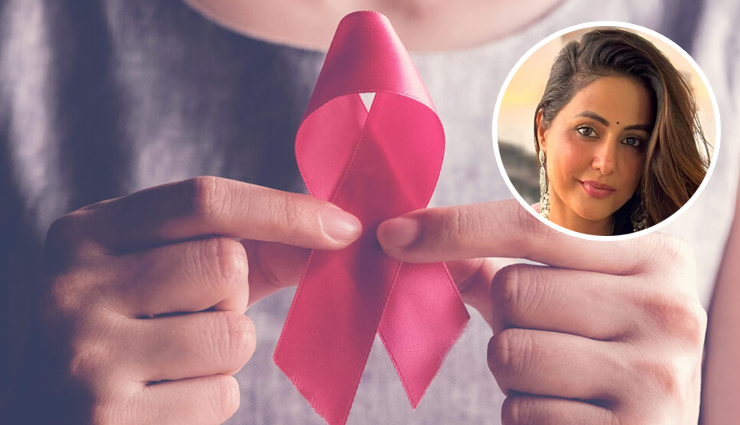
Breast cancer is a disease where malignant (cancer) cells form in the tissues of the breast. It primarily starts in the ducts (which carry milk to the nipple) or lobules (which produce milk). Breast cancer is a type of cancer that develops in the cells of the breast. It can occur in both men and women, though it is far more common in women. Here’s an overview:
Breast cancer can be classified into several types based on where the cancer starts and how it behaves. Here are the main types:
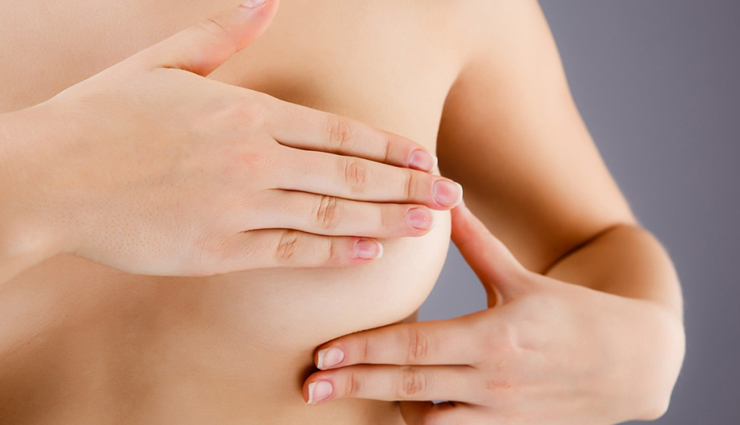
* Invasive Ductal Carcinoma (IDC):
Description: The most common type of breast cancer. It begins in the milk ducts and then invades surrounding breast tissue.
Characteristics: Can spread to nearby lymph nodes and other parts of the body.
* Invasive Lobular Carcinoma (ILC):
Description: Starts in the lobules (milk-producing glands) and then spreads to surrounding tissue.
Characteristics: Often harder to detect with mammograms and can spread in a more diffuse pattern.
* Ductal Carcinoma In Situ (DCIS):
Description: Non-invasive cancer where cells are confined to the ducts and have not spread into surrounding tissue.
Characteristics: Considered early-stage breast cancer and is often detected through screening mammograms.
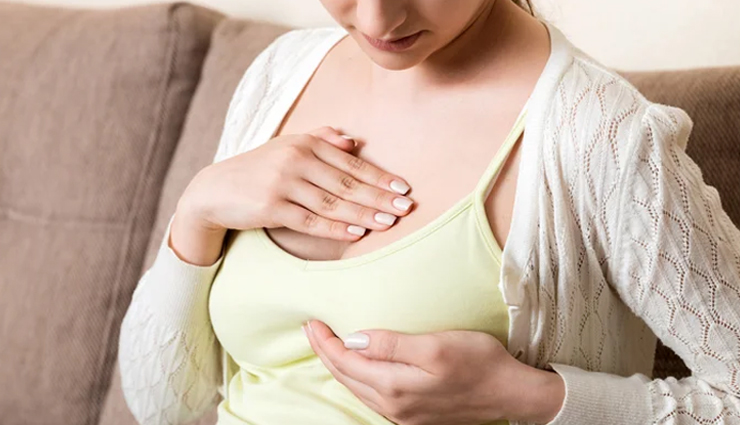
* Lobular Carcinoma In Situ (LCIS):
Description: Non-invasive and starts in the lobules. It's not considered a true breast cancer but a marker indicating an increased risk of developing invasive breast cancer in the future.
Characteristics: Often detected incidentally and may require closer monitoring.
* Triple-Negative Breast Cancer:
Description: Lacks estrogen receptors, progesterone receptors, and excess HER2 protein. It can be more aggressive and harder to treat with hormone therapies.
Characteristics: More common in younger women and those with BRCA1 mutations.
* HER2-Positive Breast Cancer:
Description: Characterized by an overexpression of the HER2 protein, which promotes the growth of cancer cells.
Characteristics: Often treated with targeted therapies that specifically attack HER2-positive cells.
* Inflammatory Breast Cancer (IBC):
Description: A rare and aggressive form where cancer cells block lymph vessels in the skin of the breast, causing inflammation and swelling.
Characteristics: Presents with redness, warmth, and a swollen appearance of the breast.
* Paget's Disease of the Nipple:
Description: A rare type of breast cancer that starts in the ducts of the nipple and spreads to the skin and area of the nipple.
Characteristics: Symptoms include itching, redness, and flaking of the nipple skin.
Breast cancer's causes are multifaceted, often involving a combination of genetic, hormonal, environmental, and lifestyle factors. Here are some of the major causes and risk factors:
* Genetic Mutations:
BRCA1 and BRCA2: Mutations in these genes significantly increase the risk of breast and ovarian cancers.
Other Genetic Mutations: Mutations in genes such as TP53, PTEN, and PALB2 can also elevate breast cancer risk.
* Family History:
A family history of breast cancer can increase the likelihood of developing the disease. If close relatives (such as mother, sister, or grandmother) had breast cancer, the risk may be higher.
* Age:
Risk increases with age. Most breast cancers are diagnosed in women over 55.
* Hormonal Factors:
Estrogen Exposure: Longer exposure to estrogen, such as starting menstruation early, going through menopause later, or using hormone replacement therapy, can increase risk.
Reproductive History: Having fewer children, not breastfeeding, or having a first child later in life can also be linked to higher risk.
* Genetics:
Inherited genetic mutations play a significant role in breast cancer. BRCA1 and BRCA2 mutations are the most well-known, but other genetic variations can also contribute.
* Lifestyle Factors:
Alcohol Consumption: Regular alcohol consumption is associated with an increased risk of breast cancer.
Obesity: Higher body weight, especially after menopause, can increase risk.
Physical Activity: Lack of physical exercise can be a contributing factor.
* Radiation Exposure:
Previous radiation therapy, particularly to the head, neck, or chest, can increase the risk of breast cancer later in life.
* Personal Health History:
A history of breast cancer or certain non-cancerous breast conditions, such as atypical hyperplasia or lobular carcinoma in situ (LCIS), can increase the risk.
* Hormone Replacement Therapy (HRT):
Use of combined hormone replacement therapy for menopausal symptoms has been linked to an increased risk of breast cancer.
* Race and Ethnicity:
Certain racial and ethnic groups may have different risk levels. For instance, African American women are more likely to develop aggressive forms of breast cancer at a younger age compared to Caucasian women.
While some risk factors, like age and genetics, cannot be changed, modifying lifestyle factors such as maintaining a healthy weight, reducing alcohol consumption, and increasing physical activity can help lower the risk of breast cancer. Regular screening and early detection play crucial roles in managing and treating the disease.
Breast cancer symptoms can vary, but some of the most common signs include:
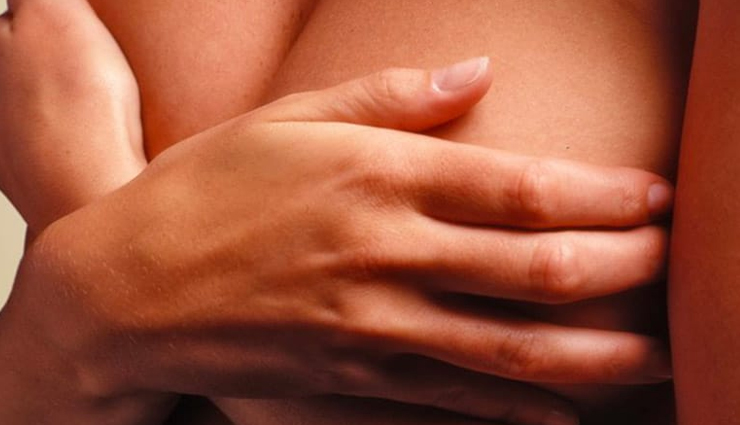
* Lump or Mass:
A noticeable lump or mass in the breast or underarm area. It may feel different from the surrounding tissue and might be hard or tender.
* Changes in Breast Size or Shape:
Any noticeable changes in the size or shape of the breast, including swelling or distortion, can be a symptom.
* Skin Changes:
Changes in the skin of the breast, such as redness, rash, or dimpling (similar to the texture of an orange peel), which may indicate inflammation or infection.
* Nipple Changes:
Any changes in the nipple, including retraction (inward turning), discharge (other than breast milk), or bleeding, can be a sign.

* Pain or Tenderness:
Persistent pain or tenderness in the breast or nipple that doesn’t go away or that changes with the menstrual cycle.
* Swelling or Lumps in the Underarm:
Swelling or lumps in the lymph nodes under the arm can indicate that cancer has spread to these areas.
* Nipple Discharge:
Unexplained discharge from the nipple, which may be clear, milky, or blood-stained.
* Changes in Breast Texture:
A noticeable change in the texture of the breast tissue, such as lumps or a thickening that feels different from the surrounding tissue.
* Swelling in the Chest Area:
Unexplained swelling in the chest or the area around the breast, even if no distinct lump is present.
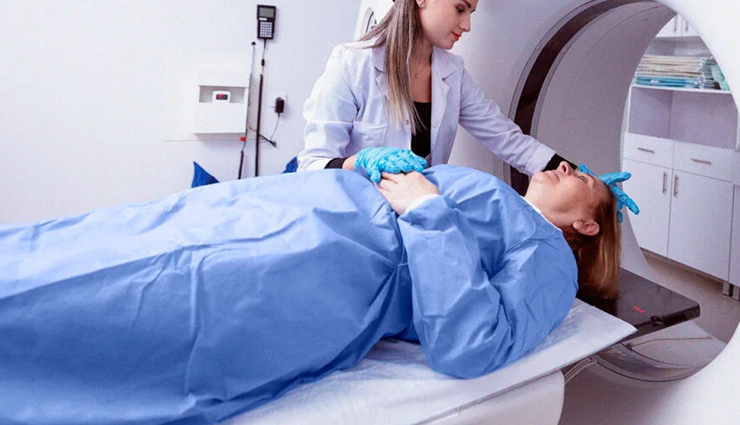
Treatment of Breast Cancer
Treatment for breast cancer depends on various factors, including the type, stage, and location of the cancer, as well as the patient’s overall health and preferences. Common treatments include:
* Surgery:
Lumpectomy: Removal of the tumor and a small margin of surrounding tissue.
Mastectomy: Removal of one (unilateral) or both (bilateral) breasts, which may be total or partial.
Sentinel Node Biopsy: Removal and examination of the sentinel lymph nodes to check for cancer spread.
Axillary Lymph Node Dissection: Removal of additional lymph nodes under the arm if cancer is detected in sentinel nodes.
* Radiation Therapy:
Uses high-energy rays (like X-rays) to target and kill cancer cells, typically used after surgery to eliminate remaining cancer cells in the breast or surrounding area.
* Chemotherapy:
Uses drugs to kill cancer cells or stop them from growing. It can be administered before surgery (neoadjuvant) to shrink tumors or after surgery (adjuvant) to kill any remaining cancer cells.
* Hormone Therapy:
For cancers that are hormone receptor-positive, this therapy blocks the body’s natural hormones (estrogen and/or progesterone) that fuel cancer growth. Common medications include tamoxifen and aromatase inhibitors.
* Targeted Therapy:
Targets specific molecules involved in cancer growth and spread. For HER2-positive cancers, medications like trastuzumab (Herceptin) are used.
* Immunotherapy:
Uses the body’s immune system to fight cancer. It is a newer treatment option and is used primarily in specific types or stages of breast cancer.
* Bone-directed Therapy:
For cancers that have spread to the bones, treatments like bisphosphonates or denosumab may be used to strengthen bones and prevent fractures.
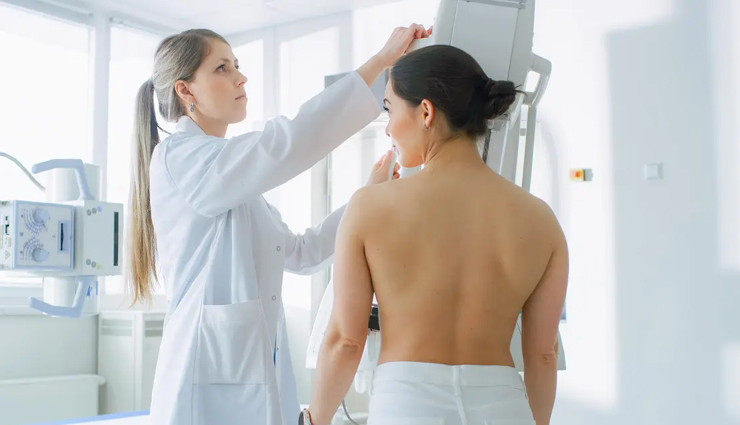
Prevention of Breast Cancer
While there is no guaranteed way to prevent breast cancer, several strategies can help reduce risk:
* Regular Screening:
Mammograms: Regular mammograms can help detect breast cancer early when it is most treatable.
Clinical Breast Exams: Regular check-ups by a healthcare provider can help detect changes in breast tissue.
* Healthy Lifestyle:
Maintain a Healthy Weight: Obesity, especially after menopause, is linked to an increased risk of breast cancer.
Physical Activity: Regular exercise can help lower breast cancer risk.
Limit Alcohol Intake: Reducing alcohol consumption can decrease breast cancer risk.
Healthy Diet: Eating a balanced diet rich in fruits, vegetables, and whole grains may help reduce risk.
* Hormone Management:
Consider Alternatives to Hormone Replacement Therapy (HRT): For menopausal symptoms, discuss the risks and benefits of HRT with your healthcare provider.
* Genetic Testing and Preventive Surgery:
For women with a family history of breast cancer or known genetic mutations (such as BRCA1 or BRCA2), options like preventive (prophylactic) mastectomy or oophorectomy (removal of ovaries) might be considered.
* Medication:
Chemoprevention: For women at high risk, medications like selective estrogen receptor modulators (SERMs) or aromatase inhibitors may help lower the risk.
* Regular Self-Exams:
Performing regular breast self-exams can help you become familiar with your breast tissue and notice any changes early.





